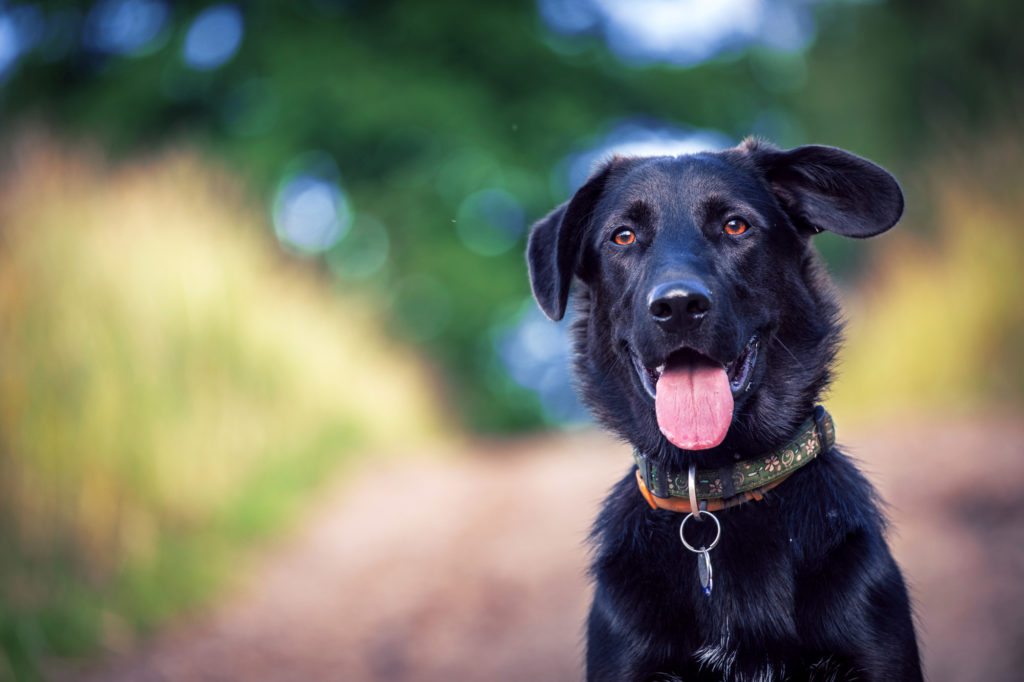
If you’ve adopted a dog from your local shelter, your first question might be, “What breed is my dog?”
Many dogs get adopted every year, and they’re usually mixed breeds. Volunteers at the shelters can sometimes know how to tell a dog’s breed, but these are mainly guesses.
However, some dogs are more tricky, displaying a variety of unique characteristics, and require a bit more detective work to figure out dog breed
Why Should I Care?
You may be thinking, why bother knowing the breed of my dog? I want to pet their furry face and have someone to come home to.
Knowing your dog’s breed helps you to evaluate its needs better, both now and in the future. For example, certain dogs need proper brushing or coat maintenance, specific diets, or can be predisposed to illness later in life, such as hip dysplasia or cancer. Being informed of these things can help you be a good dog owner.
Different Types of Breeds
When your dog is a pup, it may be best to wait until they are fully grown to try and determine your dog’s breed. The first year of a dog’s life is crucial to growth, and though they look one way as a pup, as an adult they may be completely different.
Some terms to remember as you figure out your dogs bred are:
- Purebred: a dog born to parents of the same breed
- CrossBreed: a dog born to parents of two different breeds (often purebred breeds, like a Siberian Husky and Golden Retriever)
- Mixed Breed: a dog born to parents of multiple breeds
What Breed is My Dog?
Here are some ways you can answer the question: What breed is my dog?
Head Shape
One way to help you determine your dog’s breed is by examining the shape of its head.
There are three categories used to classify dog’s heads:
- dolichocephalic or long-headed, such as the Greyhound
- brachycephalic or wide-skulled (or short-skulled), such as a Boxer
- mesocephalic or medium- sized – a combination of the latter two, such as the Golden Retriever
Most dogs will fall into the category of medium-sized.
There’s some research that suggests knowing the head shape of your dog can give you insight into its behavior. Try spending a considerable amount of time determining the head shape, so you can be prepared for the type of behavior your dog may display.
While this characteristic is important, it’s not the only factor.
Ears
Most dogs love being scratched behind their ears, but did you know looking at the ears can help you determine it’s breed?
There are many different types of shapes of dog’s ears:
- button
- “bat wing”
- V-shaped
- rose-eared
- Filbert Shaped
- folded
- hooded
- round eared
With all the different shapes, it’s enough to make your eyes cross.
But no matter what your dog’s ear shape, they will usually fall into one of these three categories:
- floppy or droopy ears, such as the Basset Hound
- erect or pointy ears, such as the Malamute
- cocked ears or semi-pricked ears, such as a Collie
Inspect your dog’s ears and compare them with other breeds. It’s quite possible, especially if your dog is a mutt, they will have a mix of some of these ear characteristics.
Coat And Color
For most dogs, the most striking feature is its coat. Coats come in a variety of colors, patterns, and hair-type.
Try to determine also if your dog has an undercoat, double coat, or single coat.
Here are a few examples of different hair types you may find on your pup:
- smooth or short coated, such as the Labrador Retriever
- medium coated, such as the German Shepard
- long coated, such as the Yorkshire Terrier
- hairless, such as the Chinese Crested
- wire coated, such as the Jack Russel Terrier
- curly coated, such as the Poodle
The color or pattern of the coat can also be a clue to determining breed. Some dog’s coats come only in patterns or only in one color.
Some patterns to take note of are:
- two-colored, (also known as bi-colored)
- spotted, such as the Dalmatian
- tri-colored (or three colors), such as the Bernese Mountain Dog
- merle, such as the Australian Shepard
Again, there may be several different ‘types’ of patterns in a category. For example, a flecked or speckled pattern could be considered spotted. Or a dog with a ‘tuxedo’ pattern (different colors in the front and back, like it’s wearing a tuxedo), could be considered bi-colored.
A dog without a pattern can come in a variety of different colors:
- gold
- black
- brown
- copper
- yellow
- white
- cream
- gray
- blue -not crayon blue, but more metallic
Body Shape/Build
To determine your dog’s shape and build, take note of its weight and height.
Measure your dog all over, from top to bottom, nose to tail, and across its body and write down the results.
Weigh your dog on a scale (gently!), and record its weight.
Most dog weight will be in one of these categories or a mixture of some:
- Toy Dogs weigh between 5-10 pounds, like Chihuahuas
- medium-sized dogs weigh between 10-50 pounds, like Terriers
- large-sized dogs weigh between 50-100 pounds, like Golden Retrievers
- giant-sized dogs weigh over 100 pounds, like the Saint Bernard
Knowing your dog’s weight helps you determine the safest food and diet to feed your dog.
Once you determine its weight, take a good look at its build. Is it muscular or slender? Stocky or thin? Tall or short? Are its legs short or long?
What’s the shape of its tail?
- curly tails, like a pug
- bobtails (short nub-like) like an Australian Shephard
- flagpole tails (stand up straight) like a beagle
- rat tails (hang down) like an Afghan
- saber tails (hang down, but curve up slightly) like a German Shephard
- sickle tails (curve up over the body) like Siberian Huskies
Temperament
Temperament can be a little tricky, as most dogs will show a variety of behaviors between breeds. But some breeds are more prone to certain temperaments than others, so this can help you determine your dog’s breed.
As you watch your dog, ask yourself these questions:
- Is the dog calm or more of a barker? (Jack Russel Terrier)
- Are the dog protective and guard-dog like? (German Shephard)
- Is the dog a digger? (Boxer)
- Does the dog enjoy the water? (Labradors)
- Does the dog retrieve well? (Golden Retriever)
- Does the dog show an interest in herding people or children? (Austrailian Shephard)
- Does the dog get lost in a scent with its nose to the ground? (Beagle)
- Is the dog excited and energetic? (Jack Russel Terrier)
- Is the dog wanting to be around others, similar to being in a pack? (Siberian Husky)
If your dog’s temperament leans more towards a certain characteristic than others, chances are they favor that breed of dog.
Consult Your Vet And Groomer
Your vet has probably seen countless dogs (including mixed breeds and purebreds) in their professional career. Don’t be afraid to reach out to them with questions concerning your dog’s breed. They can give you their best guess.
If your dog visits the groomer, ask for their opinion. Though their work may not be as extensive as your vets, they do come in contact with several breeds of dogs on a daily basis and can offer their opinion. Also ask about proper ways to take care of their coat, teeth, nails, and other grooming concerns.
Dog Tests
If the thought of how to figure out your dog’s breed characteristically seems like too much work, testing has made it easy.
Here are two ways to easily find out your dog’s breed:
Fetch! downloadable app
Fetch! is a downloadable app that analyzes your dog’s characteristics.
Just take a photo of your dog, and the app does the work. Though it’s not based on complete science, it’s more of a fun tool. However, the app will give you information on the dog’s breeds, such as a percentage match and personality features. You can learn about the history of the breed as well.
DNA Testing
If you want to avoid the dog-breed guessing game, consider investing in a dog DNA test.
DNA testing can tell you more about your dog than you could ever imagine.
DNA testing provides you with an accurate description of your dog’s genetic makeup, health conditions your breed is prone to, and character traits.
The test is similar to a human DNA test: swab the inside of your dog’s cheek (with some dogs this may be easier than others!) and send it off to the lab. Once you learn of the results, you can better manage your dog and their specific needs.
Summary
If you want the fun of trying to guess your dog’s breed, be sure to use all the above mentions. The American Kennel Club supplies pictures of dogs of all breeds, so you can glance here and compare your dog, and a wealth of information concerning their breed.
But remember, basing your dog’s breed purely on characteristics is only 25% accurate.
For a more precise description of your dog’s breed check out information on choosing the best dog DNA test kit, and get answers to the question: “What breed is my dog?”

